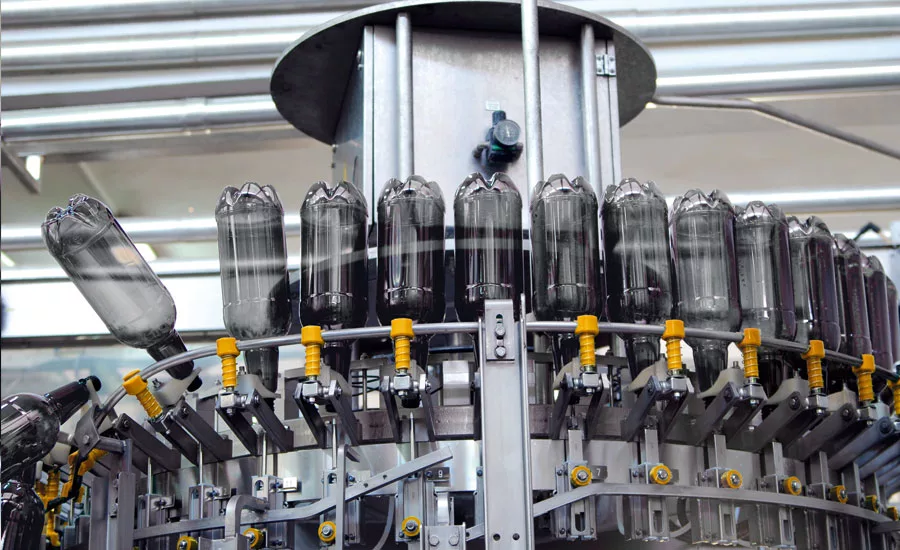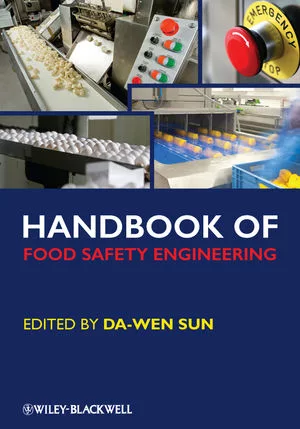Benefits of all food-grade lubricant cabinet
Transition will minimize contamination risks of lubricants

Look inside the lubricant cabinet of a food or beverage plant and it's surprising what you find. Upon close inspection, you’ll see the cabinet isn’t holding only food-grade (NSF H1) lubricants. The cabinet also might contain cleaners, glue removers and penetrating sprays.
Lubricants suitable for food-and-beverage applications are registered as H1 by NSF International (NSF), an independent registration body. These registered lubricants comply with food regulations because they are physiologically inert, tasteless and odorless. They are suitable for incidental, technically unavoidable contact with a food product up to 10 parts per million (ppm).
H1 lubricants can be safely used for handling, canning, bottling, blending, chilling, cooking, cutting, slicing and peeling applications. They're used on machinery components such as pumps, mixers, gearboxes, chain drives and conveyor belts. However, when non-food-grade lubricants clutter a storage cabinet, there's always the chance that someone could reach for the wrong lubricant.
For example, a cabinet might contain multiple common grease guns that aren’t see-through, and these types don’t allow visibility to the label to identify which grease is inside. This can result in a problem if the wrong grease gun is used and, with a mix of food-grade and non-food-grade lubricants in a plant, an incorrect and potentially non-food-grade lubricant could make its way into the grease fitting.
Given the potential for end-product contamination, this situation creates the risk that industrial-lubricant thickeners could become an ingredient in the food.
Above vs. below
There used to be the idea that industrial (NSF H2) lubricants could be used depending on whether the application was "above the line or below the line." That meant, for example, that for components above a conveyor line holding bread, you should use food-grade lubricants. That way if a hydraulic line were to burst or a gearbox was to leak above the bread, there would be a lower risk if a trace amount were to fall on the bread below.
For components below the conveyor line, however, the thinking was that there is nothing in a gearbox underneath the line that would reach the food above it, so using a non-food-grade lubricant was acceptable. That thinking has since been challenged with studies and experiences showing how contamination actually occurs in food plants. For example, there is risk that industrial oil designed for the gearbox on the floor can be mistakenly filled into the gearbox overhead.
Looking for quick answers on food safety topics?
Try Ask FSM, our new smart AI search tool.
Ask FSM →
In addition to the risk of contaminating food by applying the wrong lubricant, using different types of greases and oils in the same application actually can ruin a bearing or gearbox.
All food-grade lube cabinet
There are several reasons why a lubrication cabinet might not contain all food-grade products. A facility might have been ordering certain products for a number of years, or they're just simply unaware of the inventory being stocked. Similarly, there might be a lack of awareness that even cleaners can have an NSF registration.
The only way to completely avoid the contamination risk of H1 and non-H1 lubricants is to eliminate all non-food-grade lubricants in the cabinet and in the plant.
When doing this, there is a common misconception and concern that switching to a food-grade lubricant compromises performance. A question often asked is, "What's going to happen to that chain with a food-grade lubricant? Will I have to replace it once a year as opposed to three years?"The good news for maintenance managers is that the newest lubricants designed for use in food-and-beverage facilities are capable of doing all the things that a conventional, industrial lubricant does. Even at higher temperatures or loads and in wash-down environments, the appropriate NSF H1 lubricant still will reduce friction and wear, protect against corrosion, dissipate heat and have a sealing effect.
Technical advances in gear oils now allow H1 lubricants to deliver the same or better performance than conventional industrial gear lubricants. For example, there are some noteworthy H1 lubricants that offer superior performance in terms of efficiency, operational reliability and extended life. Because of these advances, some gearbox manufacturers even use an H1 lubricant for their first-fill when the box is not necessarily intended for use in a food or beverage facility.It's true that not all food-and-beverage companies are required to use H1 lubricants. However, by using only H1 products, a facility minimizes risk. That's why leading food-industry bodies — such as the Global Food Safety Initiative (GFSI) — are looking at every area of the "Farm to Fork" supply chain.
This also is true for the many food, beverage and pharmaceutical facilities that are pushing toward ISO 22000 standards. ISO 22000 includes the implementation of a plan based on a Hazard Analysis and Critical Control Points procedure that identifies risks that can impact the safety of the finished product. By performing a careful inventory and converting to all NSF H1-registered lubricants in a facility, maintenance managers will put in place a best practice for risk mitigation.
This article was originally posted on www.bevindustry.com.







